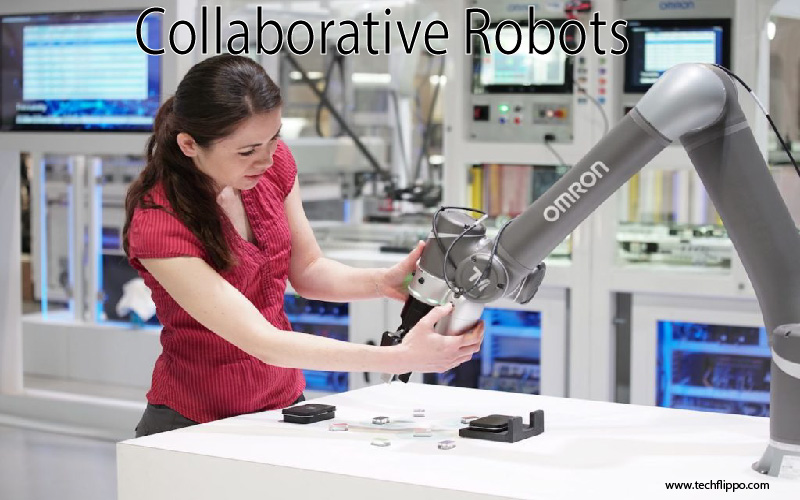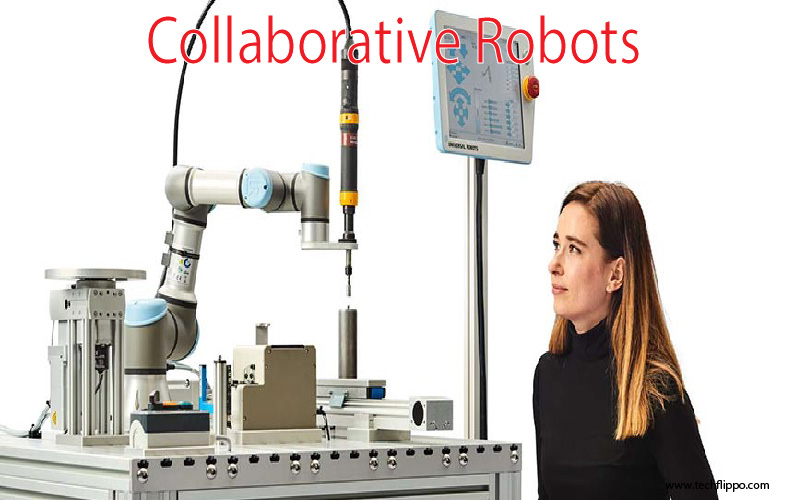Revolutionizing the Workplace with Collaborative Robots
Welcome to the future of work, where humans and robots collaborate seamlessly to revolutionize industries across the globe. Collaborative Robots, or Cobots, are leading this charge by enhancing productivity, efficiency, and safety in workplaces like never before. Let’s dive into how Cobots are reshaping traditional industries and paving the way for a new era of innovation and collaboration.

Advantages of Cobots in the Workplace
Collaborative robots, or Cobots, are revolutionizing the workplace by offering numerous advantages to businesses across various industries. One key advantage of Cobots is their ability to work alongside humans safely and efficiently. Unlike traditional industrial robots that require safety cages, Cobots can collaborate with workers on tasks in close proximity without posing a risk.
Cobots also improve productivity by automating repetitive and labor-intensive tasks, allowing employees to focus on more strategic and creative responsibilities. This increased efficiency leads to cost savings for companies as they can optimize their operations and maximize output.
Moreover, Cobots are flexible and easy to program, making them versatile for different applications and adaptable to changing production needs. Businesses can quickly deploy Cobots in diverse settings without extensive reprogramming or downtime.
The advantages of integrating Collaborative robots into the workplace are clear – enhanced safety measures, improved productivity levels, cost-efficiency gains, flexibility in operations, all contributing towards a more competitive business landscape.
How Cobots are Changing Traditional Industries
As technology advances, collaborative robots, or cobots, are revolutionizing traditional industries. These innovative machines are reshaping the way manufacturing processes function by working alongside human employees. Cobots have made automation more accessible to businesses of all sizes, improving efficiency and productivity.
In the automotive industry, cobots are streamlining production lines by handling repetitive tasks like welding and assembly with precision. This not only increases output but also ensures consistent quality in each product. In the healthcare sector, cobots are assisting medical professionals in surgeries and patient care tasks, enhancing overall accuracy and reducing human error.
Moreover, in agriculture, cobots are optimizing farming practices by planting seeds, monitoring crop health, and harvesting produce efficiently. This integration of robotics is transforming how we perceive traditional industries and paving the way for a more technologically advanced future.
Case Studies: Success Stories of Companies Using Cobots
Imagine a bustling factory where cobots seamlessly work alongside human employees, increasing productivity and efficiency. One success story comes from a leading automotive manufacturer that implemented cobots on their assembly line. By delegating repetitive tasks to cobots, workers were able to focus on more complex operations, resulting in a significant reduction in production time.
In the food industry, a well-known company revolutionized their packaging process by integrating cobots into their operations. These collaborative robots not only improved accuracy but also enhanced safety measures for the workers involved. This innovative approach led to higher output levels and increased customer satisfaction.
Furthermore, in the healthcare sector, hospitals have embraced cobots to assist medical staff with various tasks such as delivering supplies and disinfecting rooms. The seamless collaboration between humans and cobots has optimized workflows and ultimately improved patient care quality.
These case studies demonstrate the transformative power of collaborative robots across diverse industries.

Implementation and Training for Cobots
Implementation and Training for Cobots are crucial steps in integrating these innovative machines into the workplace seamlessly. Companies need to carefully plan how they will deploy cobots on the factory floor or in other work environments.
Training employees to work alongside cobots is essential for ensuring safety and efficiency. Employees must understand how to program, operate, and maintain these collaborative robots effectively.
Investing in proper training programs can help employees adapt to working with cobots more quickly. This includes hands-on experience and guidance from experts who understand the ins and outs of cobot technology.
By providing comprehensive training sessions, companies can empower their workforce to embrace automation while enhancing productivity. As industries continue to evolve, mastering the implementation and training aspects of cobots will be key to staying competitive in a rapidly changing landscape.
Addressing Concerns and Misconceptions about Cobots
Addressing concerns and misconceptions about cobots is crucial in embracing their potential in the workplace. One common misconception is that cobots will replace human workers entirely, leading to job loss. However, the reality is that cobots are designed to work alongside humans, enhancing productivity and efficiency.
Another concern is related to safety issues when working with cobots. It’s essential to understand that collaborative robots are equipped with sensors and advanced technology to detect any obstacles or unexpected movements, ensuring a safe working environment for employees.
Moreover, some fear that implementing cobots will be complex and require extensive training. Companies offering cobot solutions also provide comprehensive training programs to ensure seamless integration into existing workflows.
By addressing these concerns proactively through education and proper implementation strategies, companies can unlock the full potential of collaborative robots in revolutionizing the workplace.
The Future of Work with Collaborative Robots
As we look towards the future, it’s clear that collaborative robots are set to play an increasingly significant role in shaping the workplace. With advancements in technology and automation, cobots are poised to revolutionize industries across the board. From manufacturing and logistics to healthcare and even hospitality, these versatile machines offer a new level of efficiency and productivity.
The integration of cobots into various work environments will not only streamline processes but also enhance safety measures for workers. By taking on repetitive or dangerous tasks, they allow human employees to focus on more complex responsibilities that require critical thinking and creativity.
With ongoing developments in artificial intelligence and machine learning, we can expect cobots to become even more sophisticated and adaptable in the years ahead. This evolution will undoubtedly lead to further collaboration between humans and robots, creating a harmonious blend of skills that maximize overall output.
In essence, the future of work with collaborative robots is one filled with endless possibilities for innovation and growth. As businesses continue to embrace this transformative technology, we can anticipate a workforce that is more agile, efficient, and equipped to tackle challenges head-on.
Conclusion
Collaborative robots are revolutionizing the workplace by enhancing efficiency, safety, and flexibility in various industries. With their ability to work alongside humans harmoniously, cobots are transforming traditional manufacturing processes and paving the way for a more innovative and productive future of work. As companies continue to explore the endless possibilities of integrating cobots into their operations, we can expect to see even greater advancements in technology and a shift towards a more collaborative and efficient working environment. Embracing this technological evolution will undoubtedly lead to continued growth and success for businesses looking to stay ahead in today’s rapidly changing landscape.